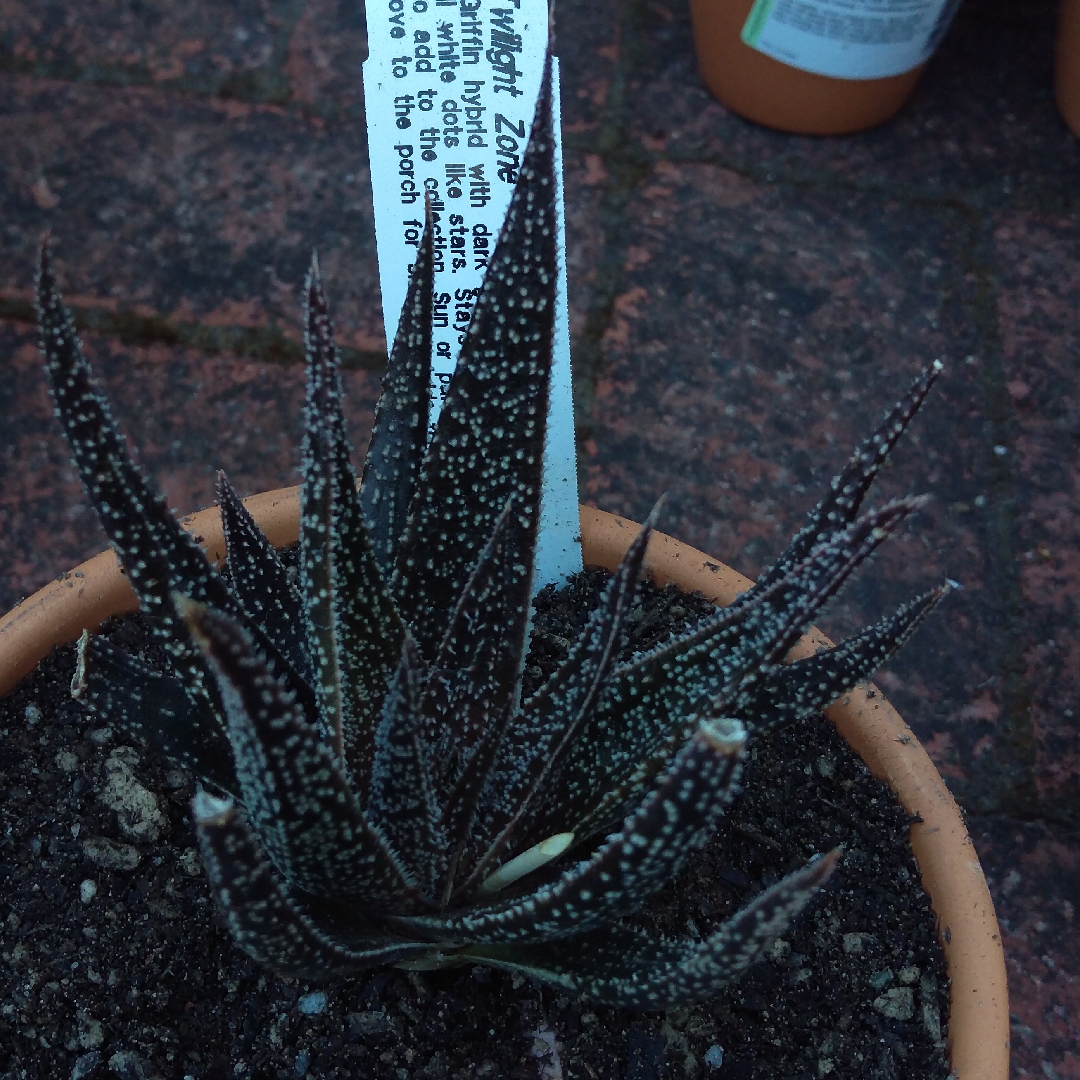
Aloe 'Twilight Zone'
Aloe 'Twilight Zone'
Aloe is a Tropical plant, and in colder climates is treated as a Houseplant. They come in many varieties, some of which flower,- there are hundreds of them! They cannot survive in temperatures below 10c/55f. The leaves are spiky and fleshy. Twilight Zone's foliage is deep dark green, and it is covered in tiny white dots, looking like stars on that night sky! Aloe x haworthioides ‘Twilight Zone’ is a great Aloe to plant as a specimen in a small pot,
Contributed by @disneyfacts
-
Full sun
-
Occasional watering
-
Not Frost hardy
-
Free draining
Common name
Aloe 'Twilight Zone'
Latin name
Aloe 'Twilight Zone'
type
Succulent
family
Asphodelaceae
ph
7.0 - 8.5 Acid - Neutral
Plant & bloom calendar
-
Best time to plant
-
When the plant will bloom
full grown dimensions
 0.60 M
0.50 M
0.60 M
0.50 M
Aloe 'Twilight Zone'
Aloe is a Tropical plant, and in colder climates is treated as a Houseplant. They come in many varieties, some of which flower,- there are hundreds of them! They cannot survive in temperatures below 10c/55f. The leaves are spiky and fleshy. Twilight Zone's foliage is deep dark green, and it is covered in tiny white dots, looking like stars on that night sky! Aloe x haworthioides ‘Twilight Zone’ is a great Aloe to plant as a specimen in a small pot,
Planting
From Early Spring TO Late Winter
Plant in good cactus compost, or a loamy compost with added sand, for drainage.
Propagating
From Early Spring TO Late Winter
Carefully remove side-shoots when they are large enough to handle, cutting them away from the parent plant. Make sure they have some root, and re-pot.
Flowering
From Late Spring TO Early Spring
Downward hanging flowers grow on spikes, and can be white, yellow, orange or red. They usually appear in Summer, but can be seen irregularly through the year.









